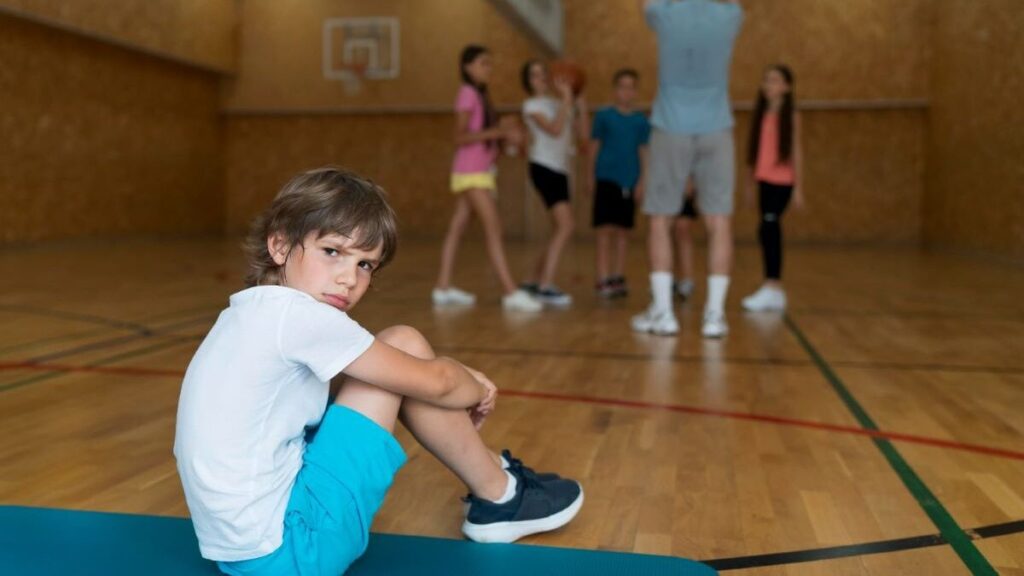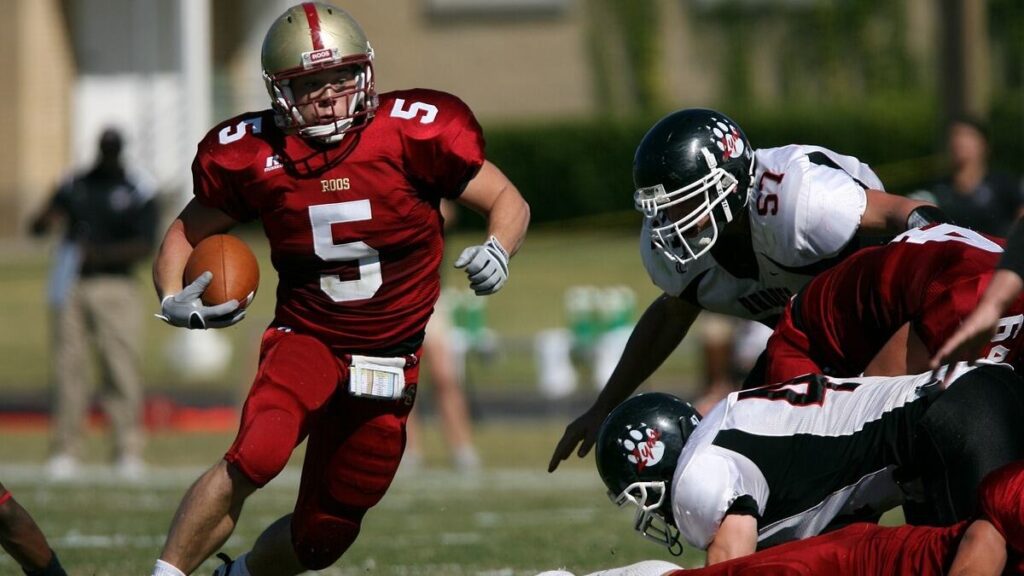Introduction
Sports are meant to be a fun and engaging way for kids to stay active, build friendships, and develop important life skills. Yet, a surprising trend has emerged—kids are quitting sports at an alarming rate. Whether it’s due to intense pressure, high costs, or simply a lack of enjoyment, youth sports participation is declining fast.
- Introduction
- The Alarming Statistics on Youth Sports Dropout Rates
- Why Are Kids Quitting Sports? The Core Reasons Behind the Dropout
- The Role of Overly Competitive Sports Culture
- Financial Barriers: Are Youth Sports Becoming Too Expensive?
- The Effect of Burnout and Physical Exhaustion
- Social Media, Video Games, and Changing Interests
- Are Coaches and Parents to Blame?
- The Lack of Inclusive and Fun-Oriented Sports Programs
- The Psychological Impact of Sports Dropout on Kids
- How to Keep Kids Engaged in Sports
- The Future of Youth Sports: Can We Reverse the Dropout Trend?
- Conclusion
For many parents and coaches, this is concerning. They’ve invested time, energy, and money into their child’s athletic journey, only to see them walk away. But why is this happening? What’s causing so many young athletes to give up on something that once brought them joy? In this article, we’ll explore the real reasons behind the rising kids quitting sports trend and what can be done to reverse it.
The Alarming Statistics on Youth Sports Dropout Rates
The numbers don’t lie—youth sports dropout rates are increasing year by year. Studies show that nearly 70% of kids quitting sports by age 13. This shocking statistic raises serious concerns about the future of youth athletics.
According to a report by the Aspen Institute, millions of kids are stepping away from organized sports due to various factors. While some may assume it’s just a loss of interest, deeper issues like financial constraints, burnout, and over-competitiveness play a major role.
What is the average age when kids drop out? Between 11 and 13. This is when sports transition from fun and recreational to highly competitive. Sadly, many young athletes feel forced to either excel or quit entirely, leaving little room for those who want to play for enjoyment.
Why Are Kids Quitting Sports? The Core Reasons Behind the Dropout
Understanding why kids are quitting sports is the first step to fixing the problem. Here are the key reasons behind the dropout trend:
Overwhelming Pressure from Parents and Coaches
Many kids feel immense pressure from parents and coaches to perform at a high level. Instead of enjoying the game, they worry about making mistakes, winning, and living up to unrealistic expectations. This pressure can suck the joy out of sports and make kids want to quit.
The Increasing Cost of Youth Sports
Sports are no longer just a fun hobby—they’ve become a financial burden. Parents must pay for registration fees, equipment, uniforms, travel, and training camps. These costs can overwhelm low-income families, making sports participation nearly impossible.
Burnout and Overtraining
Many young athletes experience burnout due to excessive training schedules and year-round competition. Playing one sport without a break can lead to physical and mental exhaustion, making kids want to step away entirely.
Lack of Fun and Enjoyment
At the core of it, sports should be fun. However, kids lose interest when the emphasis shifts solely to competition, rankings, and winning. If the enjoyment disappears, so does their motivation to keep playing.
The Impact of Social Media and Screen Time
With the rise of social media, video games, and online entertainment, kids spend less time physically active. Many now prefer digital engagement over outdoor sports, leading to a natural decline in participation.
The Role of Overly Competitive Sports Culture
Today’s youth sports culture often prioritizes competition over enjoyment. Kids are pushed into travel teams, elite training programs, and high-stakes tournaments from a young age. While competition can be beneficial, an extreme focus on winning discourages kids who want to play for fun.
How Early Specialization Hurts Young Athletes
Many kids are pressured to specialize in one sport too soon, leading to burnout, injuries, and a loss of interest. Studies show that multi-sport athletes stay active longer and experience fewer injuries than those who specialize early.
The Negative Effects of “Win at All Costs” Mentality
When winning becomes the sole focus, kids feel stressed rather than excited about sports. The fear of failure and constant pressure to outperform others take the joy out of the game, pushing many young athletes to quitting sports.
Financial Barriers: Are Youth Sports Becoming Too Expensive?
One of the biggest reasons kids are quitting sports is the rising cost of participation. What was a simple community activity has now become a costly commitment.
The Rising Costs of Youth Sports
Parents today are paying more than ever for their children to participate in sports. The price tag can reach thousands per year between registration fees, travel expenses, uniforms, and private coaching. According to a study by the Aspen Institute, the average annual cost for youth sports per child is around $700, with some elite sports programs costing upwards of $10,000 annually.
The Accessibility Gap Between Low-Income and High-Income Families
For low-income families, these costs are simply unaffordable. While wealthier families can enroll their kids in high-end training programs, travel leagues, and elite tournaments, children from lower-income backgrounds often miss out on participating. This creates an accessibility gap where only those who can afford to play continue while others drop out due to financial constraints.
Possible Solutions
- Community-sponsored leagues with lower fees
- Equipment donation programs
- More recreational sports options that prioritize affordability over competition
If we want to keep kids engaged in sports, we need to make them financially accessible to everyone.
The Effect of Burnout and Physical Exhaustion
Many young athletes are quitting sports not because they dislike sports but because they’re exhausted. Burnout is a serious issue affecting both mental and physical well-being.
Signs of Burnout in Young Athletes
- Loss of interest or excitement in playing
- Constant fatigue and soreness
- Increased stress and anxiety about performing well
- Frequent injuries from overuse
How Excessive Training Harms Kids
Playing one sport all year without rest can lead to overuse injuries, mental fatigue, and frustration. Many children are pushed into specializing in a single sport from an early age, leaving no time for variety or recovery. Instead of growing their passion for the game, they become overwhelmed and lose interest altogether.
How to Prevent Burnout
- Encourage multi-sport participation to avoid overuse injuries
- Prioritize rest and recovery
- Let kids have unstructured playtime instead of strict training sessions
Social Media, Video Games, and Changing Interests
The rise of social media and video games has transformed how kids spend their free time. Instead of playing outside, many stay indoors glued to their screens.
The Decline in Physical Activity Due to Screen Time
According to the CDC, children spend an average of 7 hours per day on screens, whether watching videos, playing games, or browsing social media. With so much entertainment at their fingertips, physical activity takes a backseat.
Why Kids Prefer Digital Entertainment Over Sports
- Video games and social media offer instant gratification
- Online activities require less effort compared to physical sports
- Digital platforms provide social interactions without the need for in-person engagement
While technology isn’t inherently bad, it does contribute to kids spending less time on the field and more time in front of a screen.
Are Coaches and Parents to Blame?
Sometimes, the biggest pressure in youth sports comes from the sidelines. While many parents and coaches have good intentions, their actions can make sports unenjoyable for kids.
The Role of Pushy Parents in Making Sports Unenjoyable
Some parents live vicariously through their children’s athletic success. They push too hard, criticize mistakes, and expect perfection. This creates anxiety and makes children feel like they’re playing to please their parents rather than for their enjoyment.
The Impact of Toxic Coaching Styles
Coaches focusing solely on winning rather than skill development can drive kids away. Harsh criticism, unrealistic expectations, and negative reinforcement often lead to frustration and low self-esteem.
How Parents and Coaches Can Do Better
- Encourage effort over results
- Let children make errors so they can grow from them.
- Prioritize fun and development instead of pressure and perfection
A positive sports environment is crucial for keeping kids engaged and motivated.
The Lack of Inclusive and Fun-Oriented Sports Programs
For many kids, organized sports feel more like a competitive battleground than a fun activity. If a child isn’t naturally talented or doesn’t enjoy high-pressure games, they may feel excluded.
Why Some Kids Feel Left Out in Competitive Leagues
Not all children are destined to be star athletes. Unfortunately, many sports programs are designed only for the best players, leaving others on the bench. If a child doesn’t make the “A” team, they may feel discouraged and quit altogether.
The Importance of Recreational and Non-Competitive Sports
- Offering more casual, fun-focused sports leagues
- Creating “no-cut” teams where every child gets to play
- Emphasizing skill-building over competition
Kids should have opportunities to enjoy sports regardless of their skill level.
The Psychological Impact of Sports Dropout on Kids
When kids quit sports, they don’t just lose a hobby—they may also lose confidence, friendships, and a key source of physical activity.
How Quitting Sports Affects Self-Esteem and Social Skills
Playing sports teaches teamwork, discipline, and perseverance. When a child quits, they may struggle with self-confidence and feel like they’ve “failed” at something important. Additionally, sports often serve as a major social outlet, and leaving a team can result in lost friendships.
The Long-Term Effects on Health and Fitness
Studies show that kids who stop playing sports are less likely to stay active as they age. This can lead to increased health risks such as obesity, cardiovascular issues, and a sedentary lifestyle.
Encouraging lifelong participation in sports—even in a casual setting—helps promote long-term well-being.
How to Keep Kids Engaged in Sports
We need to make sports enjoyable again to prevent kids from quitting sports.
Encouraging Multi-Sport Participation
Allowing kids to try multiple sports helps them develop a well-rounded skill set while keeping their passion for athletics alive. Children who focus on just one sport too early risk burnout, repetitive injuries, and loss of interest. Multi-sport participation encourages diverse physical development, improving coordination, agility, and overall athletic ability. Studies show that young athletes who play multiple sports are less likely to experience mental exhaustion and more likely to stay engaged long-term. Exploring different activities also helps kids find what they truly enjoy, leading to a lifelong love for sports rather than feeling pressured to specialize too soon.
Focusing on Fun and Development Rather Than Competition
When sports start feeling like a job rather than a joy, kids naturally lose interest. The pressure to win, constant criticism, and unrealistic expectations can make young athletes feel stressed instead of excited. Parents and coaches must shift their focus from winning at all costs to fostering personal growth, teamwork, and enjoyment.
Encouraging kids to develop their skills, celebrate small achievements, and enjoy the camaraderie of sports creates a positive experience. Children who feel supported rather than pressured are likelier to stay engaged, build confidence, and develop a lifelong love for physical activity.
The Future of Youth Sports: Can We Reverse the Dropout Trend?
The current youth sports system is failing many children. While some thrive in competitive environments, others feel excluded, overwhelmed, or unable to participate due to financial barriers. If we want to stop the trend of kids quitting sports, we need a fundamental shift in how we approach youth athletics.
What Needs to Change?
- More affordable sports options to ensure every child has access, regardless of income.
- A stronger focus on fun and development rather than intense competition and rankings.
- Supportive coaching and parenting that prioritizes encouragement overpressure.
When prioritizing kids’ well-being over trophies and scholarships, we create a sports culture where every child feels valued. By making these changes, we can ensure all kids—not just the most talented—find joy in sports and stay active for life.
Conclusion
The reality is undeniable—kids are quitting sports at alarming rates, often due to intense pressure, skyrocketing costs, burnout, and a loss of enjoyment. Sports, once a source of joy and personal growth, have become stressful and exclusionary for many young athletes. To combat this, we must foster a healthier, more inclusive sports culture where all kids, regardless of skill level or financial background, feel welcomed and valued.
Parents should encourage effort over perfection, coaches must create supportive environments, and communities must ensure that sports remain affordable and accessible. When kids feel inspired rather than pressured, they are likelier to stay engaged, build confidence, and develop a lifelong passion for sports.
By working together, we can bring back the excitement of the game and ensure that every child has the opportunity to play, grow, and thrive.


